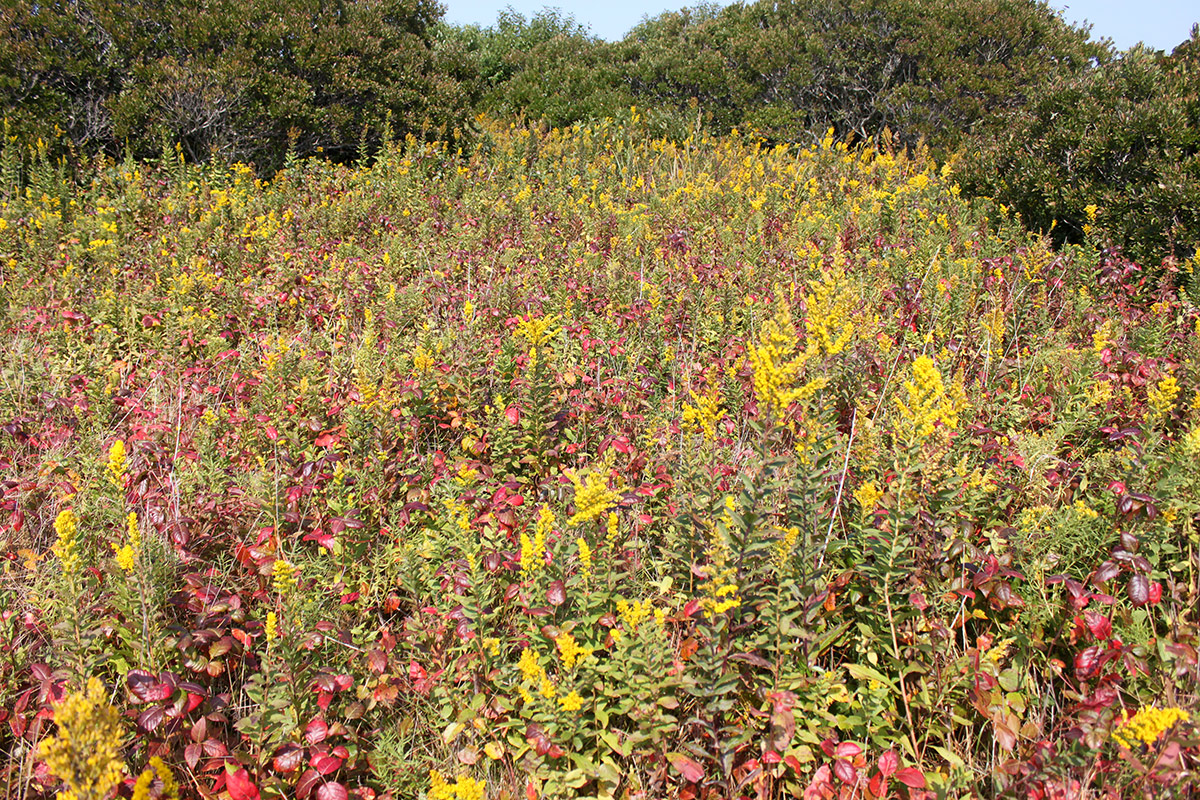We asked, “What will the fall be like?”
We wondered, will the Island remain busy? Will people stay on, even after the usual Labor Day exodus? How many people will retreat from their urban life, and enroll their children in the Martha’s Vineyard schools?
We are finding out. School enrollments are up, and school is either online-only, or a hybrid of online and classroom instruction. Realtors and builders say they are busier than ever. It is a seller’s market.
With people staying, will the conservation lands remain busy, with trailheads filling to capacity in October and November and perhaps even December, just as they did in March?
The pandemic has upended Island life. We grope our way forward, breaking traditions and overlooking familiar milestones. Yet to the question of what the fall will be like, there is one aspect of a Vineyard autumn that I can speak to with certainty.
What I do know is that in September, the goldenrod burst forth in sunburst bouquets of yellow blossoms. Purple asters dotted the edges of dusty dirt roads. Migrating tree swallows swarmed in great, swirling flocks over the bayberries beside Black Point Pond. Brookside beetlebungs turned a brilliant scarlet. And that this September, after working closely with the Kennedy-Schlossberg family, the Land Bank, and generous donors, we announced that over 300-acres of undeveloped land in Aquinnah will be held in conservation and will soon be open for the public to enjoy. What I know for certain is that—for every September and every fall and every season ever to come—this land will be available for all to appreciate and enjoy.
And I know that in October, the staghorn sumac in the Nat’s Farm hedgerow will turn a blazing red, and its branches will droop, laden with ripe bunches of lavender berries. The red maples along the Tiasquam will turn yellow, and orange, and red, and sometimes all three colors on the same leaf. The plains of huckleberry at Quansoo will turn orange, and the poison ivy a bright red.
And come November, even the doughty oak leaves will turn color, turning to a rusty shade of orange, and then scattering in a stiff breeze. By mid-month the oaks will be bare, save their cladding of lichen, and will appear in stark silhouette as the sun sets through the woods. The winter sunsets will have begun, the most beautiful of all.
In the early days of the pandemic, as we faced fear and confusion, the familiar signs of spring returning to the Island gave us comfort and reassurance. And in these days of fall, as we ponder the change to Island life, and wonder about how long the pandemic will be with us, nature stands ready to reassure, and comfort, and guide us,
once again.
Adam R. Moore, Executive Director


